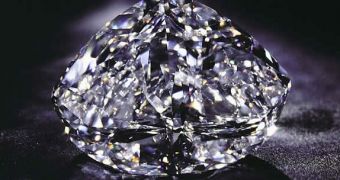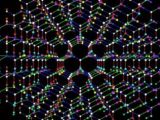Diamonds have fascinated humans ever since they were discovered, with their breathtaking beauty and unsurpassed hardness. Thus, modern technology is seeking for new ways of synthesizing such crystals in industrial facilities, in order to make them available for everybody.
An allotrope form of carbon, the diamond is the hardest material created naturally on Earth, and the third on Moss scale, after the aggregate carbon nanorods and ultrahard fullerite. The word diamond actually comes form the Greek word 'adamas', which means 'invincible'. It has highlight dispersion properties, and low refraction properties that make it ideal for industrial optical applications and jewelry.
So, why can't we reproduce the diamond crystals in controlled environment? I mean how hard could it be, we've put a man on the Moon, for God's sake! Well, in fact, there are a number of methods currently available to reproduce diamond structure, but the diamonds often come out colored due to nitrogen impurities intruding in the carbon crystalline structure, and are mostly used for industrial purposes, rather than to make jewelry.
Mathematician Toshikazu Sunada studied the diamond's crystalline structure, so that he could make a mathematical model, in order to create theoretical representations of crystals that present properties similar to that of the diamond. He came up with a model of a crystal, which he called 'K_4 crystal'; it's currently unknown if it can occur naturally, but it might be synthesized in industrial processes. Sunada has realized that there are an infinite amount of possible crystalline configurations available that have specific symmetric properties, however only the K_4 crystal closely mimics the properties of the diamond.
In order to create the crystal, Sunada modeled it by representing the atoms composing the structure through point-like objects, vertices, linked together by chemical bonds represented by lines or edges, to create a starting crystal that can be replicated and joined together with other such crystals in a periodic fashion. This unique configuration enables the appearance of two distinct patterns inside the crystalline structure, the first originating in the bonds between different building-block crystals, and the second in the chemical bonds between separate atoms linking together inside the building-blocks.
Due to this particularity, one could create an infinite type of crystals, by joining together base building-blocks in multiple configurations. Furthermore, Sunada has revealed that there are distinct properties which define the crystalline structure of a diamond.
Maximal symmetry represents the symmetric representation of a building-block structure. Other crystalline substances might not always present maximal symmetry, however they can be deformed in such a way that the physical action on the structure is forced into maximal symmetry arrangement. To better understand this property of the diamond try to imagine a circle and sphere. If you rotate the circle in a plane, one way or the other, it will still maintain its structure and look like a circle. The same is available for the sphere, it doesn't matter how you rotate it, because it will remain a sphere. So, if you now take a diamond crystal model and rotate it, it will always look the same from any angle of view.
Again, out of all the possible mathematical models proposed by Sunada, K_4 seems to respect the maximal symmetry rule. Although it might appear as a study extracted from a science fiction book, mathematical representations of crystals are more real than you might think. In the early 1990, scientists created the model of the so-called Fullerene allotrope, only to find out later, to their surprise, that such a substance occurs naturally in nature in the carbon 60 molecule.

 14 DAY TRIAL //
14 DAY TRIAL // 
